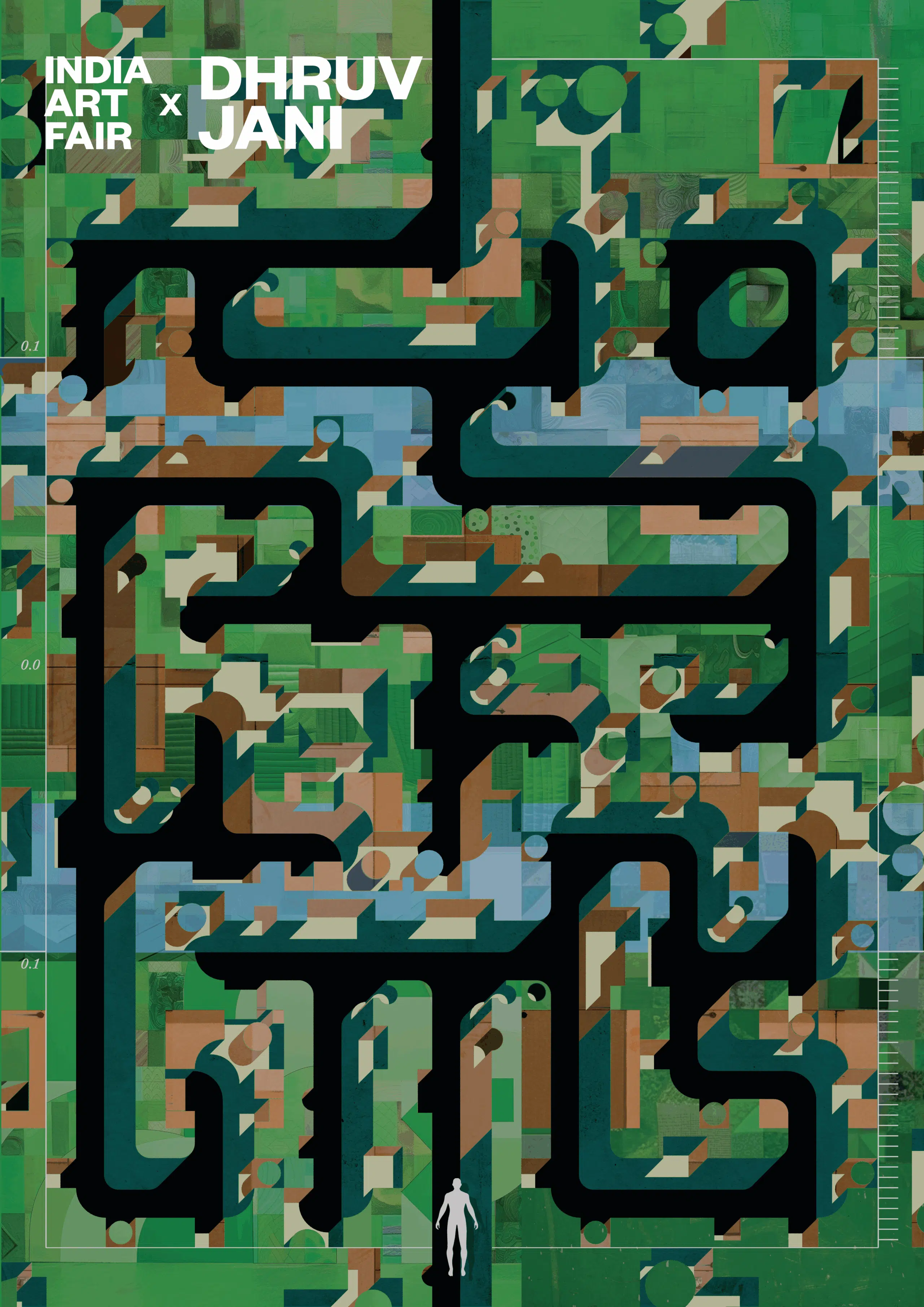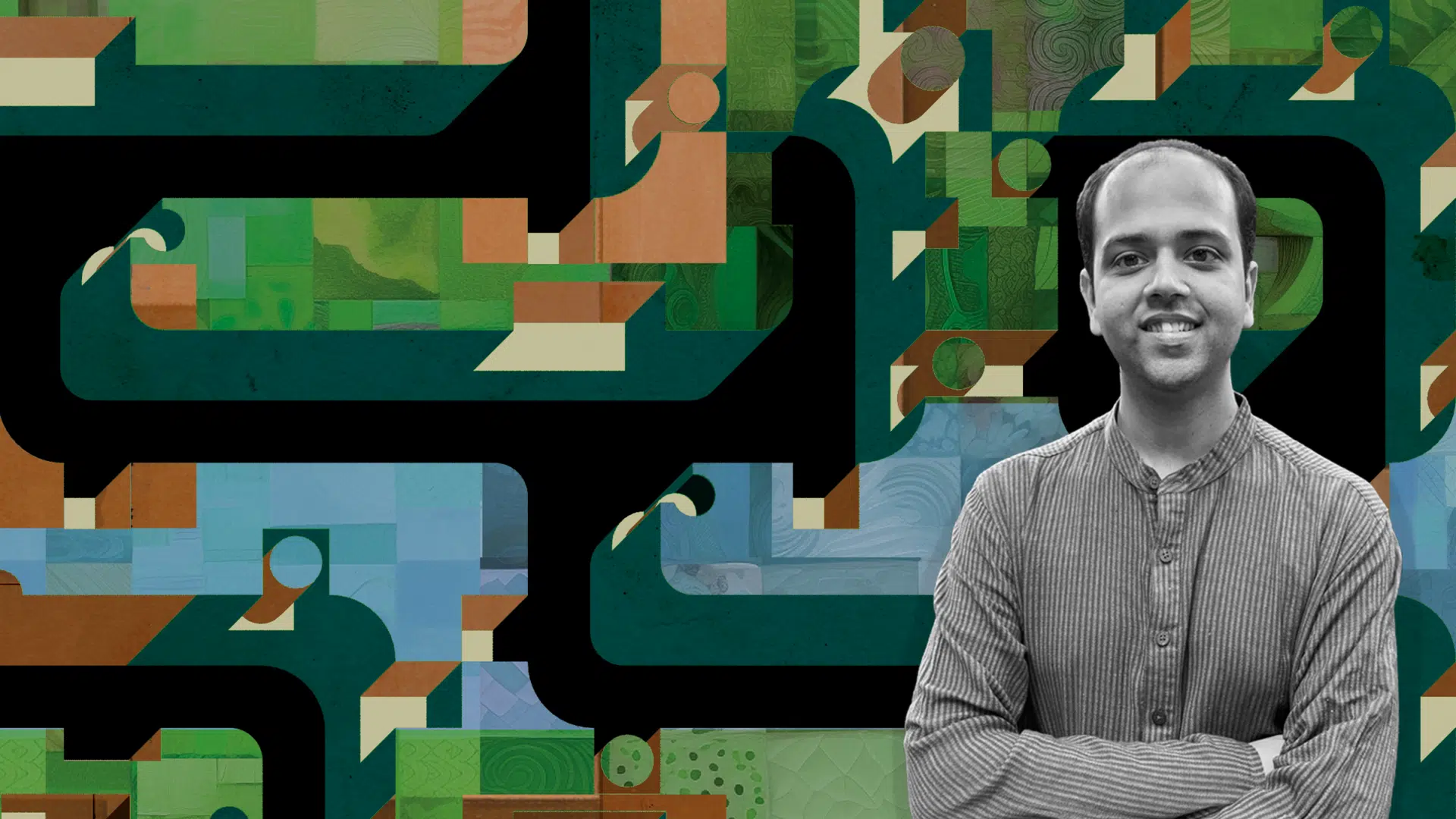Dhruv Jani’s home studio in Chala, Gujarat is only a few kilometres inland from the Western coastline of India. The studio forms one half of Studio Oleomingus, the experimental and independent video game studio known for its story-led, vibrant and conceptual “interactive fictions”. The other half of the Studio is across the country, at programmer Sushant Chakrabarty’s studio in Koch Bihar, West Bengal. While the collaborators often meet and create at geographic mid-points, the library and collections at Jani’s studio operate as a memory bank and intellectual playground for the duo, from which their digital artworks and games emerge.
“Much of my space is a library,” Jani says by way of giving us a tour of his space, lined with literary fiction by authors like Jorge Luis Borges and Naiyer Masud, postcolonial writing by theorists such as Frantz Fanon and Edward Said, among a slew of history, popular science and computing reference books. Alongside the books, Jani’s huge collection of Euro-style and table-top role-play board games tower over one side of the space and a bank of computers take up the other, with a workstation in between. The books, games and computer hardware form the coordinates for Jani’s work as a writer and artist, creating interactive narratives in the form of video games that restage colonial and postcolonial histories of his home region of coastal Gujarat — and South Asia as a whole.
“Hypertext expands the space of a story, so that suddenly a story can go in several contradictory directions all at once.”
“We don’t make the distinction between story and game very harshly.” says Jani, for whom video games offer a new form for storytelling, with new narrative and critical possibilities. “It is just that the types of stories we are most interested in are best told in the form of a hypertext,” he explains. Hypertext in a narrative game, allows for Jani’s stories to break out of the mould of linear chronology and branch into various directions, just like hyperlinks on websites like Wikipedia, one of Jani’s favourite forms of hypertext, allow internet users to jump from one page to another. “Hypertext expands the space of a story,” Jani continues, “so that suddenly a story can go in several contradictory directions all at once. For us, because we are interested in relooking at colonial and postcolonial narratives, this free space is crucial to give voice to historically erased materials. There is a certain magic to this kind of speculation.” For Jani, this hypertext is a “new grammar” with which to investigate old stories and tell new ones.
DOWNLOAD ARTIST POSTER BELOW >

Download this playable artist poster by Dhruv Jani and navigate its geological layers, full of complex and colourful stories and artefacts, developed by the artist as an early iteration of his project for India Art Fair.
Jani writes his games in a custom-made Hypertext software that allows him to craft narratives already in the logic of branches and loops. “It is possible to write it all on paper,” he comments, “but it is exponentially more interesting to do it as hypertext.” Once the story is written, Jani creates its visual elements as textures, found images or illustrations in Adobe Photoshop on iPad Pro with Apple Pencil, collaging together brightly coloured architectural and pop-cultural elements from colonial and postcolonial India, “repurposing hegemonic iconography in a vernacular, contemporary and slightly irreverent way.” These span from Portuguese columns and imperial crests from coastal Gujarat and Daman, to tubes of toothpaste and matchboxes from more recent times, patched together to “visually defeat the expectation of a linear and sensible narrative.”
Chakraborty’s specialism kicks in while creating the three-dimensional world of a game, computing player movements and building the control system, all done using a suite of 3D plug-ins in a game software called Unity. “Creating on the MacBook Pro, with its performance and oodles of memory, has given us access to certain kinds of computation that would otherwise be impossible,” Jani says, describing newer experiments like creating procedural labyrinths using wave-function collapse algorithms that the duo are using to programme their project for India Art Fair 2024.
Jani and Chakraborty’s love of language, landscape and history have all contributed to their response to the 2024 Digital Artists in Residence theme of ‘Forces of Nature’, exploring the colonial history and language of human interactions with the natural world. As Digital Artists in Residence, the duo will create a video game, formed as a poetic adventure quest to the “seed of a mountain”, during which the player would unearth their own assumptions about what it means to be a “good steward of the planet”. “The game is set in the hilly ridges of the North end of the Western Ghats, where I live,” Jani describes, “which used to be densely forested before the boom in neocolonial industrialisation in the region. We wanted to merge this reality and history of this place with a mythological and fable-like quality in the game.” The purpose, as with all of Jani’s works, will be to immerse the audience into a playful and critical space from within which to see the world as an uncertain place of layered and contradictory stories.
Dhruv Jani was born in New Delhi in 1989 and established Studio Oleomingus with Sushant Chakrabarty in 2015. His work, supported by Chakrabarty, will be shown at the Digital Residency Hub at India Art Fair 2024.


